![]()
"You talkin' to me?"
It's the 40th anniversary of "
Taxi Driver" (released on February 8, 1976), the movie that gave
Robert De Niro his most famous line, put
Martin Scorsese on the map, proved that the pre-teen
Jodie Foster was an Oscar-worthy thespian, and (most notoriously) was cited by John Hinckley as an inspiration for his assassination attempt on President Ronald Reagan.
In honor of the film's anniversary, here are 25 things you need to know about how Travis Bickle came to be.
![]() 1.
1. The script, by
Paul Schrader (pictured, left), was semi-autobiographical. After a divorce and a break-up with a girlfriend, he wrote the movie while living in his car, feeling suicidal, obsessing about guns and pornography, and having spoken to no one for weeks. As he recalled in 2013, "Taxi Driver" was "an exorcism through art," and it worked.
2. Martin Scorsese saw the script as early as 1972, but didn't yet have the clout to make it, much less cast the then-unknown Robert De Niro in the lead. It would be another couple of years -- after Scorsese and De Niro earned critical acclaim for "
Mean Streets," and De Niro won an Oscar for "
The Godfather Part II" -- that Columbia finally made a deal with Scorsese and De Niro.
![]() 3.
3. Before the studio signed De Niro,
Jeff Bridges (above) was briefly up for the role of Bickle. "Taxi Driver" lore also has it that singer Neil Diamond, whose management was trying to get him into movies at the time, was also interested in the part.
4. When "Taxi Driver" was greenlit, De Niro was in Italy, filming Bernardo Bertolucci's "1900." He'd fly back from Italy to Manhattan and drive a cab on weekends to prepare for his role, then fly back to Italy for another week of filming there.
![]() 5.
5. At the time, De Niro was still unknown enough to be anonymous as a cab driver. But one passenger, another actor, recognized him as the star who'd just won an Academy Award for his "Godfather" role and told De Niro he was sorry for him, since it was clear that even a recent Oscar-winning actor still had to support himself as a cabbie.
6. De Niro picked up Travis' Midwestern accent from American GIs he met at a military base in Italy. He taped their conversations and listened to them to develop Travis' voice.
![]() 7.
7. Travis was even more racist in Schrader's original draft than in the finished film. Initially, all of his shooting victims were African-Americans. But the filmmakers decided to make them white, lest the movie spark racial rioting.
8. Scorsese wanted De Niro's "
Mean Streets" co-star
Harvey Keitel to play the role of campaign worker Tom, but Keitel wanted the smaller role of Sport, the pimp. Turns out Keitel knew a pimp in his own Hell's Kitchen neighborhood of Manhattan. Keitel took the man to the Actors Studio, and together, they beefed up Sport's scenes by improvising dialogue for the character.
![]() 9.
9. For the role of Betsy, the campaign worker Travis tries to date, Scorsese initially sought a
Cybill Shepherd-type actress -- until Shepherd's agent suggest his client (pictured, right) to the director.
10. Jodie Foster was only 12 years old when she was cast as Iris, the child prostitute. and the role was considered so risqué that she had to have a social worker on the set with her. She also had to spend several hours with a therapist to prove that she wouldn't be psychologically scarred by the role. She also had to have a stand-in perform some of Iris' more provocative actions. The stand-in was Foster's sister, Connie, eight years older but no taller.
![]() 11.
11. One inspiration for Iris was a real-life teen prostitute whom Schrader interviewed. He had Foster meet her, but the actress recalled years later that the two girls had nothing to say to each other. Still, the teen got a walk-on part in the movie as Iris' friend, whom Travis nearly hits with his taxi.
12. Albert Brooks was primarily known as a stand-up comedian when Scorsese gave the future film director his first movie role as Tom, Betsy's wary colleague. Like many of the other actors, Brooks made up much of his own dialogue in improvisations during rehearsals.
![]() 13. Peter Boyle
13. Peter Boyle (left), as wise elder cabbie Wizard, developed his character's dialogue by taping conversations among real cabbies who were regulars at the Belmore Cafeteria, the late-night diner that's also where the taxi drivers hang out in the movie.
14. Leonard Harris, who played candidate Charles Palantine, wasn't an actor, but he was familiar to New York audiences as a drama and book critic on local TV.
![]() 15.
15. Scorsese (above) gave himself a cameo as one of Travis' passengers, the one who threatens to kill his own wife. He took the part only because the actor he'd cast, George Memmoli, had suffered an accident on another film set and was suddenly unavailable.
16. Steven Prince, who played gun dealer Easy Andy, was such a character that Scorsese later made a documentary about him, 1978's "American Boy: A Profile of Steven Prince." In that film, Prince talks about his career as Neil Diamond's road manager and about his own history of heroin addiction. One of his stories -- about jabbing an overdosing woman in the heart with an adrenaline syringe -- was supposedly the inspiration for the famous similar incident in "
Pulp Fiction."
![]() 17.
17. The most famous bit of improvised dialogue in "Taxi Driver" is De Niro's "You talkin' to me?" monologue in front of his mirror. There are a number of stories about where De Niro found the iconic line. One story is that he was imitating an underground comedian from the New York club scene. Another is that the phrase was part of a common Actors Studio acting exercise. But the best story came from E Street Band saxophonist Clarence Clemons, who taught De Niro how to look like he was playing the sax in Scorsese's 1977 musical "New York, New York." Clemons claimed De Niro told him he got the line from Clemons' boss, Bruce Springsteen, who supposedly used it as part of his own stage patter at the time.
18. Travis' notorious Mohawk haircut came from his Vietnam veteran background. Schrader had learned from other vets that soldiers would sometimes shave their heads that way when they were about to go on commando missions, and that everyone knew it was wise to avoid Mohawked soldiers because they were psyching themselves up for the slaughter. De Niro couldn't actually shave his head that way because the film was shot out of sequence, so he had to wear a bald cap with a strip of hair on it, pasted over his crew cut.
![]() 19.
19. The climactic shoot-out sequence was filmed over the course of three months inside a condemned New York apartment building. The famous overhead tracking shot at the end was accomplished by chainsawing a path in the floor of the apartment above, which made the crumbling building even more rickety and dangerous. Among those who helped Scorsese compose the sequence in the editing room was his pal,
Steven Spielberg.
20. The sequence was so bloody that it almost earned the film an "X" rating just for violence. To earn the film an R-rating, the filmmakers desaturated the colors in the sequence, so that the blood wasn't so red.
![]() 21.
21. For the film's epilogue, when Travis becomes a media hero, Schrader said he was inspired by the fate of Lynette "Squeaky" Fromme, who nearly assassinated President Gerald Ford and, as a result, landed on the cover of Newsweek. Little did he imagine that another would-be presidential assassin would one day cite "Taxi Driver" in turn as his inspiration. In fact, after Hinckley shot Reagan, Schrader said the FBI interrogated him, asking the filmmaker if he knew of any conspiracy that might link Hinckley and others who identified too much with Travis Bickle.
22. The unforgettable instrumental score to "Taxi Driver" was the final work in the celebrated career of composer
Bernard Herrmann, who'd scored such landmark movies as "
Citizen Kane" and "
Psycho." He recorded the music in just two days and died hours after finishing the sessions.
![]() 23.
23. "Taxi Driver" cost just $1.3 million to make. It earned back $28.3 million at the U.S. box office.
24. In the months after its release, "Taxi Driver" won the Palme D'Or, the top prize at the Cannes film festival. In 1977, it was nominated for four Academy Awards: Best Picture, Best Actor (for De Niro), Best Supporting Actress (for Foster), and Best Score. (No nominations for Scorsese or Schrader.) On Oscar night, the film was shut out.
25. There's been much speculation as to whether the film's finale, in which Travis is lionized and enjoys a brief reunion with Betsy, is to be interpreted as actual events or just the fantasy of the dying Travis. Scorsese and Schrader have said that Travis does live at the end, but that he's still as lonely and alienated as ever -- and is still a ticking time bomb. Said Schrader: "I think the syndrome is just going to start all over again."
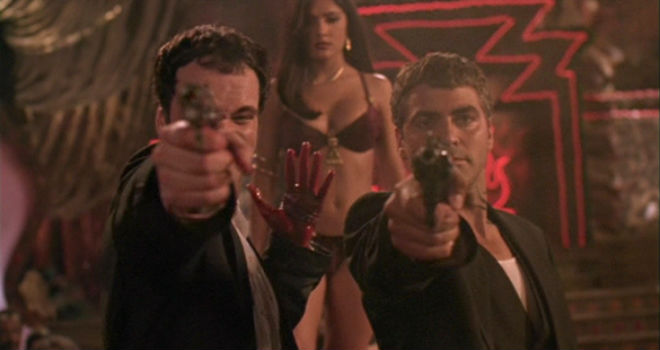 "From Dusk Till Dawn" looked like a box office misfire for hot young filmmakers Quentin Tarantino and Robert Rodriguez when it was released 20 years ago this week (on January 19, 1996). But like the strip-club vampires who ambush the fugitive Gecko brothers, "Dawn" has proven surprisingly resistant to death.
"From Dusk Till Dawn" looked like a box office misfire for hot young filmmakers Quentin Tarantino and Robert Rodriguez when it was released 20 years ago this week (on January 19, 1996). But like the strip-club vampires who ambush the fugitive Gecko brothers, "Dawn" has proven surprisingly resistant to death.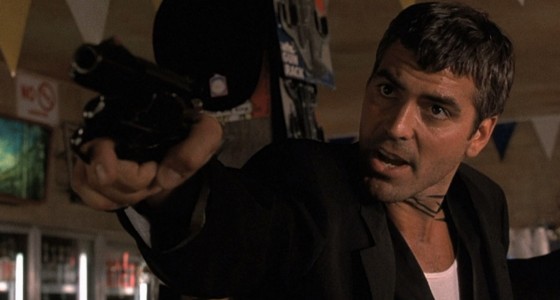 1. "Dusk" was actually Tarantino's first paid screenwriting gig. It was commissioned in 1990 by makeup artist Roberto Kurtzman as a calling-card project that would show off his monster-movie makeup skills. For his effort, Tarantino received $1500 -- and Kurtzman's invaluable assistance, when Tarantino made his directing debut the following year with "Reservoir Dogs," in the notorious ear-slicing scene.
1. "Dusk" was actually Tarantino's first paid screenwriting gig. It was commissioned in 1990 by makeup artist Roberto Kurtzman as a calling-card project that would show off his monster-movie makeup skills. For his effort, Tarantino received $1500 -- and Kurtzman's invaluable assistance, when Tarantino made his directing debut the following year with "Reservoir Dogs," in the notorious ear-slicing scene.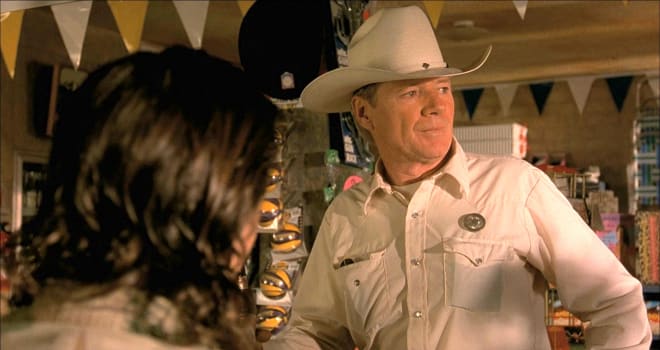 3. Earl McGraw, the Texas ranger played by Michael Parks (above), may not live long in "Dusk," but Tarantino and Rodriguez brought him back in "Kill Bill, Vol. 1" and "Death Proof."
3. Earl McGraw, the Texas ranger played by Michael Parks (above), may not live long in "Dusk," but Tarantino and Rodriguez brought him back in "Kill Bill, Vol. 1" and "Death Proof." 6. In an early draft of Tarantino's script, the vampire queen's name was Blonde Death. But when Hayek landed the part, the screenwriter renamed the character Santanico Pandemonium, after "Satanico Pandemonium," a 1975 Mexican horror film he remembered seeing on the shelves during his video-store clerk days.
6. In an early draft of Tarantino's script, the vampire queen's name was Blonde Death. But when Hayek landed the part, the screenwriter renamed the character Santanico Pandemonium, after "Satanico Pandemonium," a 1975 Mexican horror film he remembered seeing on the shelves during his video-store clerk days. 8. Rodriguez came up with an ingenious way of keeping the ratings board from branding the ultraviolent film with an NC-17 rating: He made the vampires' blood green. Apparently, buckets of gore are okay as long as they're not red.
8. Rodriguez came up with an ingenious way of keeping the ratings board from branding the ultraviolent film with an NC-17 rating: He made the vampires' blood green. Apparently, buckets of gore are okay as long as they're not red. 10. Clooney won the MTV Movie Award that year for Best Breakthrough Performance. Tarantino, however, was nominated for a Razzie for Worst Supporting Actor. He lost to Marlon Brando, for his flamboyant turn in "The Island of Dr. Moreau."
10. Clooney won the MTV Movie Award that year for Best Breakthrough Performance. Tarantino, however, was nominated for a Razzie for Worst Supporting Actor. He lost to Marlon Brando, for his flamboyant turn in "The Island of Dr. Moreau."



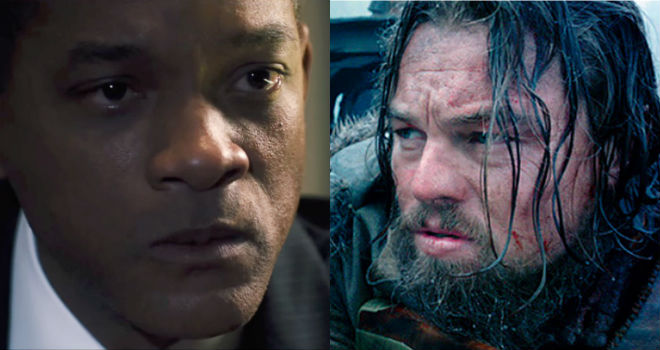 Anyone who thinks the Oscars are trivial, that they're just about privileged people who live in a bubble giving each other golden trophies, wasn't paying attention this week.
Anyone who thinks the Oscars are trivial, that they're just about privileged people who live in a bubble giving each other golden trophies, wasn't paying attention this week.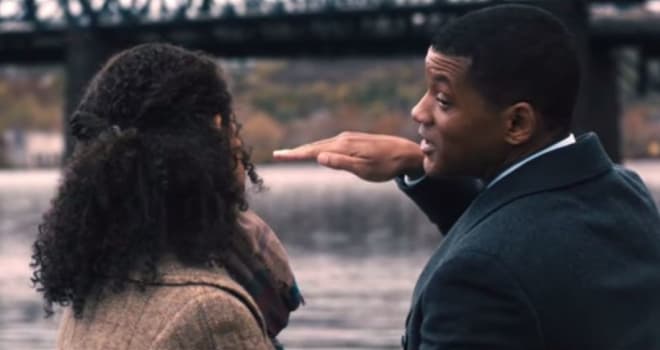 Why does it even matter? Because black people, like everyone else, want to see people like themselves on screen and hear their own stories told. Because people of color also buy more movie tickets per capita than white people do, so you'd think Hollywood would try to do more to cater to its customer base. Because the success of black stars like
Why does it even matter? Because black people, like everyone else, want to see people like themselves on screen and hear their own stories told. Because people of color also buy more movie tickets per capita than white people do, so you'd think Hollywood would try to do more to cater to its customer base. Because the success of black stars like 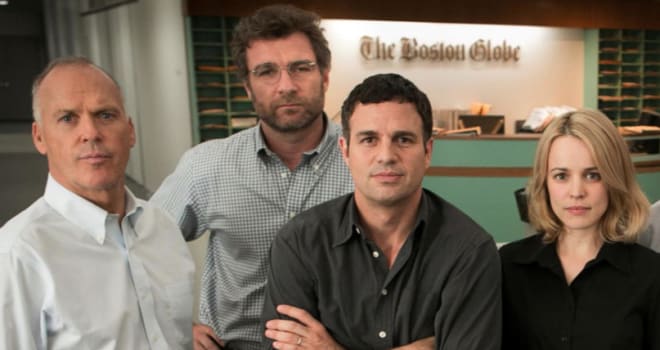 Special chutzpah points go to supporting Actor nominee
Special chutzpah points go to supporting Actor nominee  Lee's behavior seems paradoxical, and not just because the filmmaker won an honorary Oscar last November for his groundbreaking body of work -- meaning that, had he shown up on February 28, there would actually be one black honoree recognized at the ceremony. But also because last year, when questioned about #OscarsSoWhite,
Lee's behavior seems paradoxical, and not just because the filmmaker won an honorary Oscar last November for his groundbreaking body of work -- meaning that, had he shown up on February 28, there would actually be one black honoree recognized at the ceremony. But also because last year, when questioned about #OscarsSoWhite, 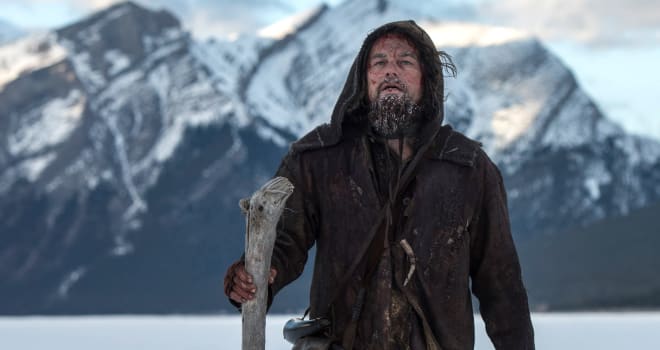 No one calling for a boycott has been able to explain that; nor has anyone who is calling for host Chris Rock to step down. Even
No one calling for a boycott has been able to explain that; nor has anyone who is calling for host Chris Rock to step down. Even 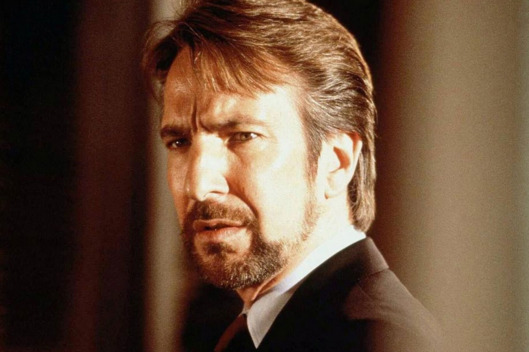 Under Boone Isaacs, the Academy has been working to diversify its membership for the past four years. And on Thursday came the news that
Under Boone Isaacs, the Academy has been working to diversify its membership for the past four years. And on Thursday came the news that 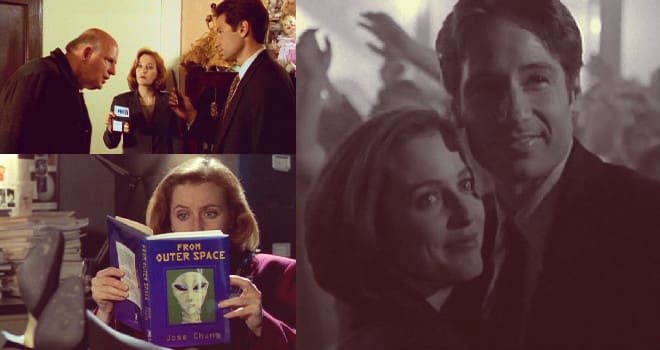
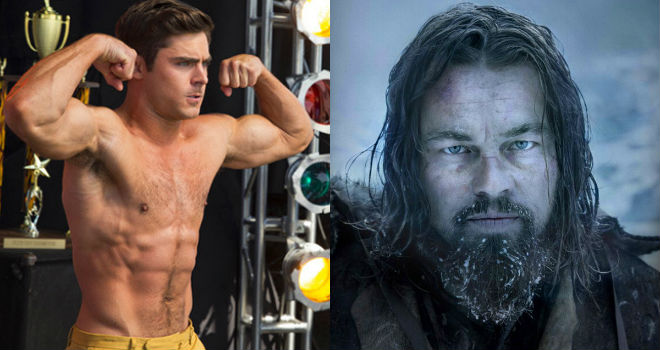 Forget it, Jake, it's January.
Forget it, Jake, it's January.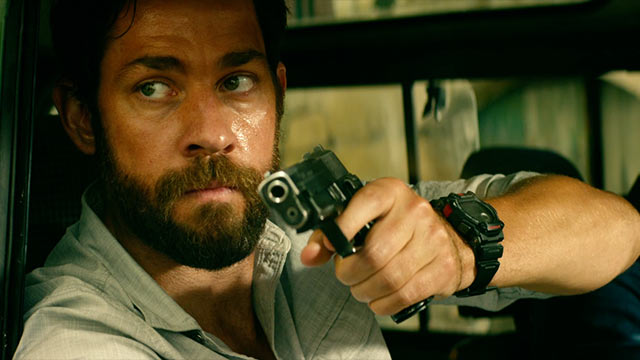 But even the hit holdover movies, including "
But even the hit holdover movies, including "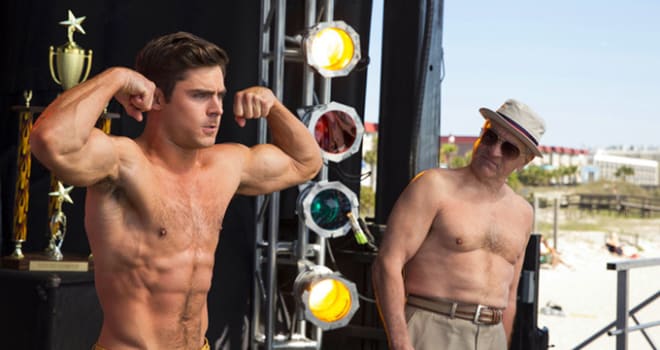 Sorry, millennials, but it's true. Aside from "
Sorry, millennials, but it's true. Aside from "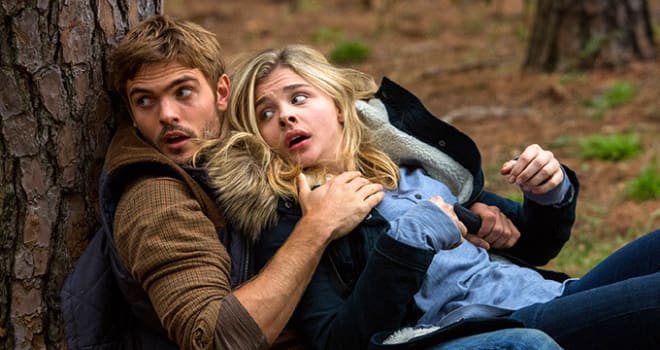 Or "
Or "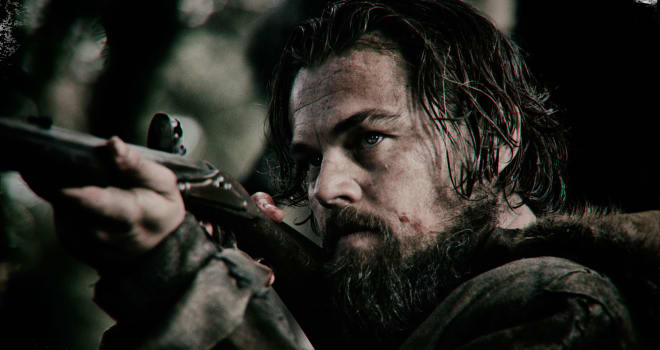 Capitalizing on its 12 Academy Award nominations and its Oscar buzz, "Revenant" added several hundred IMAX and premium-large-format venues this weekend, whose mega-screen ticket surcharges should have resulted in a $20 to $25 million weekend. But not even Oscar attention, extra screens, surcharges, and proven box office draw DiCaprio could keep the film from losing 50 percent of last weekend's business.
Capitalizing on its 12 Academy Award nominations and its Oscar buzz, "Revenant" added several hundred IMAX and premium-large-format venues this weekend, whose mega-screen ticket surcharges should have resulted in a $20 to $25 million weekend. But not even Oscar attention, extra screens, surcharges, and proven box office draw DiCaprio could keep the film from losing 50 percent of last weekend's business.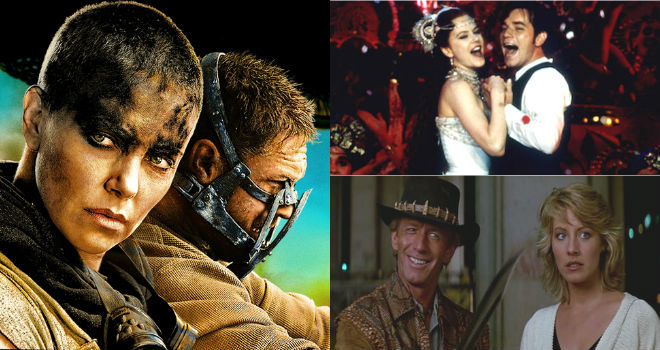
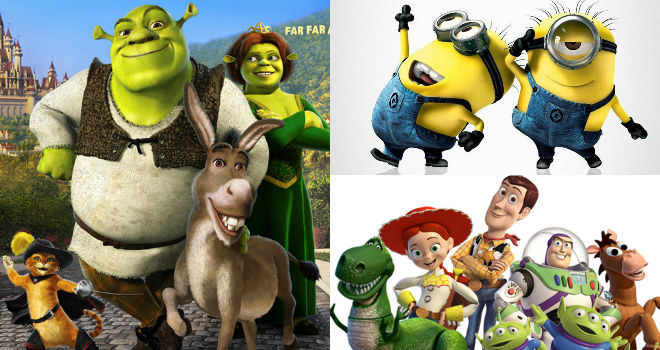
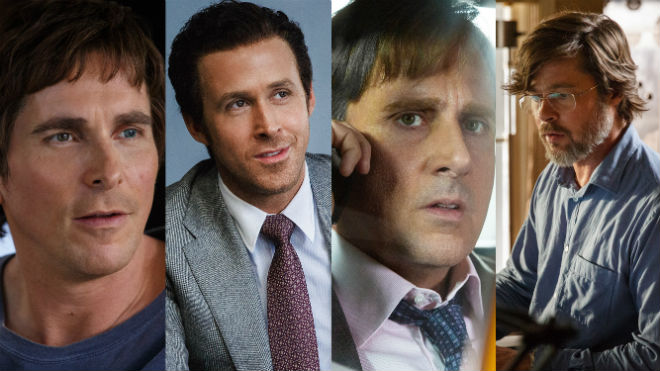 At last, an Oscar shocker that has nothing to do with the racial makeup of
At last, an Oscar shocker that has nothing to do with the racial makeup of 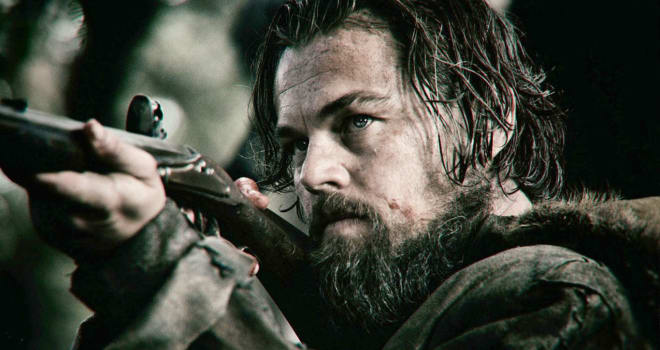 The Academy does like movies that address serious topics of historical importance. It likes them even more when they're hits, and to date, "Short" has racked up a respectable $57.5 million. (That's less than half of what "Revenant" [above] has earned, but it's still about double the earnings of fellow nominees "Spotlight" and "
The Academy does like movies that address serious topics of historical importance. It likes them even more when they're hits, and to date, "Short" has racked up a respectable $57.5 million. (That's less than half of what "Revenant" [above] has earned, but it's still about double the earnings of fellow nominees "Spotlight" and "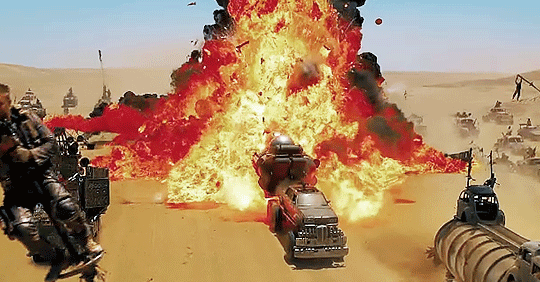 Still, when the (blue) chips are down, is "The Big Short" really the kind of movie that the Academy wants to elevate above all others? After all, "Spotlight" is about heroic reporters taking on a powerful institution and uncovering terrible crimes. "Revenant," "
Still, when the (blue) chips are down, is "The Big Short" really the kind of movie that the Academy wants to elevate above all others? After all, "Spotlight" is about heroic reporters taking on a powerful institution and uncovering terrible crimes. "Revenant," "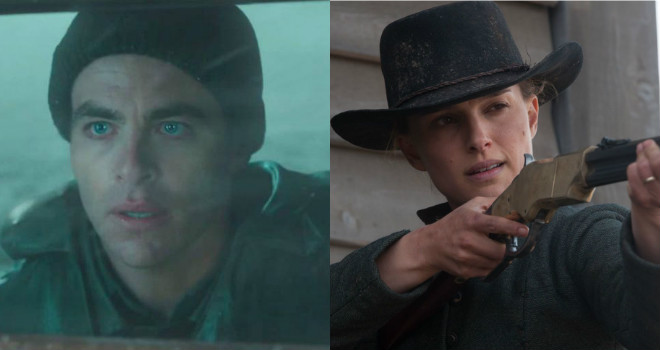 The math doesn't add up.
The math doesn't add up.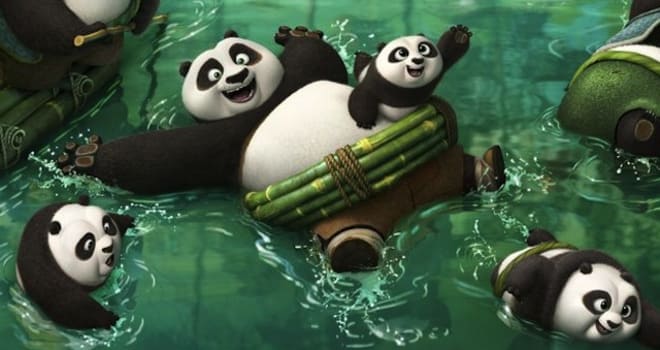 Really, the makers of "Panda 3" should be pretty happy with the movie's estimated $41.0 million take, even though that opening is on the lower-end of expectations. After all, it is a third installment and it comes nearly five years after the last one (an eternity for the kid-movie audience). That it did as well as it did -- debuting at No. 1, claiming the third-biggest January opening ever -- is a tribute to the strength of the franchise, the film's positive reviews, and the weakness of the competition. It's still the lowest opening of the three "Kung Fu Panda" movies, but the first two opened in the summer, not in the dead of January.
Really, the makers of "Panda 3" should be pretty happy with the movie's estimated $41.0 million take, even though that opening is on the lower-end of expectations. After all, it is a third installment and it comes nearly five years after the last one (an eternity for the kid-movie audience). That it did as well as it did -- debuting at No. 1, claiming the third-biggest January opening ever -- is a tribute to the strength of the franchise, the film's positive reviews, and the weakness of the competition. It's still the lowest opening of the three "Kung Fu Panda" movies, but the first two opened in the summer, not in the dead of January.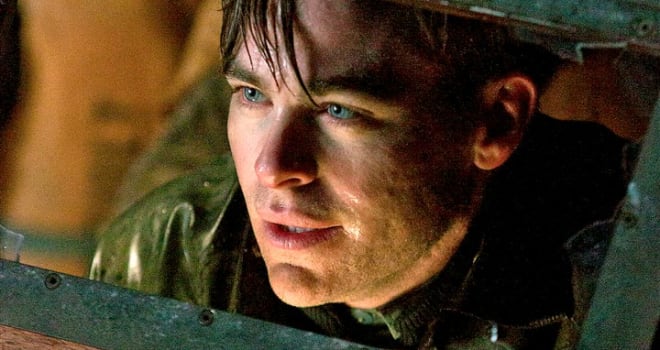 Imitating the successes of Januaries past was also a problem for
Imitating the successes of Januaries past was also a problem for 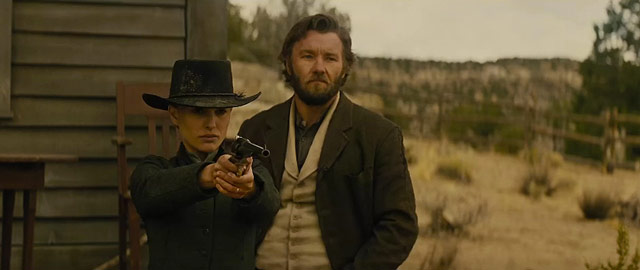 Plus, "Jane" is competing not just with other horse operas, but also with all the Oscar-nominated movies that are dominating the art-houses because -- all together now -- it's January. And those movies are doing reasonably well. In fact, none of the holdovers in the top 15 slots on the chart lost more than 39 percent of last week's business. The fact that there wasn't a huge East Coast blizzard or NFL playoffs this weekend certainly helped, but still, such strong legs are a sign of good health for the box office overall.
Plus, "Jane" is competing not just with other horse operas, but also with all the Oscar-nominated movies that are dominating the art-houses because -- all together now -- it's January. And those movies are doing reasonably well. In fact, none of the holdovers in the top 15 slots on the chart lost more than 39 percent of last week's business. The fact that there wasn't a huge East Coast blizzard or NFL playoffs this weekend certainly helped, but still, such strong legs are a sign of good health for the box office overall.
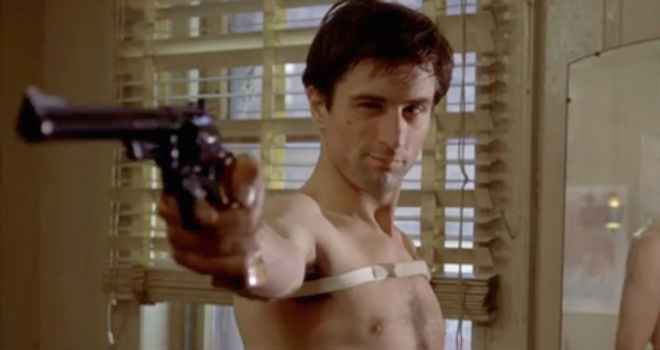 "You talkin' to me?"
"You talkin' to me?" 1. The script, by
1. The script, by  3. Before the studio signed De Niro,
3. Before the studio signed De Niro,  5. At the time, De Niro was still unknown enough to be anonymous as a cab driver. But one passenger, another actor, recognized him as the star who'd just won an Academy Award for his "Godfather" role and told De Niro he was sorry for him, since it was clear that even a recent Oscar-winning actor still had to support himself as a cabbie.
5. At the time, De Niro was still unknown enough to be anonymous as a cab driver. But one passenger, another actor, recognized him as the star who'd just won an Academy Award for his "Godfather" role and told De Niro he was sorry for him, since it was clear that even a recent Oscar-winning actor still had to support himself as a cabbie. 7. Travis was even more racist in Schrader's original draft than in the finished film. Initially, all of his shooting victims were African-Americans. But the filmmakers decided to make them white, lest the movie spark racial rioting.
7. Travis was even more racist in Schrader's original draft than in the finished film. Initially, all of his shooting victims were African-Americans. But the filmmakers decided to make them white, lest the movie spark racial rioting. 9. For the role of Betsy, the campaign worker Travis tries to date, Scorsese initially sought a
9. For the role of Betsy, the campaign worker Travis tries to date, Scorsese initially sought a  11. One inspiration for Iris was a real-life teen prostitute whom Schrader interviewed. He had Foster meet her, but the actress recalled years later that the two girls had nothing to say to each other. Still, the teen got a walk-on part in the movie as Iris' friend, whom Travis nearly hits with his taxi.
11. One inspiration for Iris was a real-life teen prostitute whom Schrader interviewed. He had Foster meet her, but the actress recalled years later that the two girls had nothing to say to each other. Still, the teen got a walk-on part in the movie as Iris' friend, whom Travis nearly hits with his taxi. 13.
13.  15. Scorsese (above) gave himself a cameo as one of Travis' passengers, the one who threatens to kill his own wife. He took the part only because the actor he'd cast, George Memmoli, had suffered an accident on another film set and was suddenly unavailable.
15. Scorsese (above) gave himself a cameo as one of Travis' passengers, the one who threatens to kill his own wife. He took the part only because the actor he'd cast, George Memmoli, had suffered an accident on another film set and was suddenly unavailable.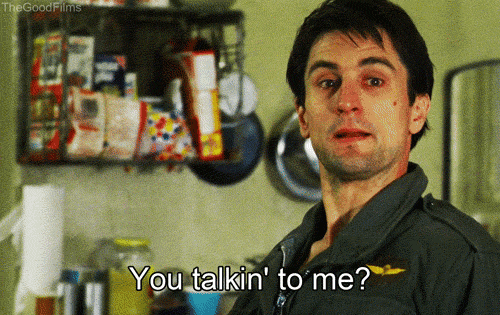 17. The most famous bit of improvised dialogue in "Taxi Driver" is De Niro's "You talkin' to me?" monologue in front of his mirror. There are a number of stories about where De Niro found the iconic line. One story is that he was imitating an underground comedian from the New York club scene. Another is that the phrase was part of a common Actors Studio acting exercise. But the best story came from E Street Band saxophonist Clarence Clemons, who taught De Niro how to look like he was playing the sax in Scorsese's 1977 musical "New York, New York." Clemons claimed De Niro told him he got the line from Clemons' boss, Bruce Springsteen, who supposedly used it as part of his own stage patter at the time.
17. The most famous bit of improvised dialogue in "Taxi Driver" is De Niro's "You talkin' to me?" monologue in front of his mirror. There are a number of stories about where De Niro found the iconic line. One story is that he was imitating an underground comedian from the New York club scene. Another is that the phrase was part of a common Actors Studio acting exercise. But the best story came from E Street Band saxophonist Clarence Clemons, who taught De Niro how to look like he was playing the sax in Scorsese's 1977 musical "New York, New York." Clemons claimed De Niro told him he got the line from Clemons' boss, Bruce Springsteen, who supposedly used it as part of his own stage patter at the time. 19. The climactic shoot-out sequence was filmed over the course of three months inside a condemned New York apartment building. The famous overhead tracking shot at the end was accomplished by chainsawing a path in the floor of the apartment above, which made the crumbling building even more rickety and dangerous. Among those who helped Scorsese compose the sequence in the editing room was his pal,
19. The climactic shoot-out sequence was filmed over the course of three months inside a condemned New York apartment building. The famous overhead tracking shot at the end was accomplished by chainsawing a path in the floor of the apartment above, which made the crumbling building even more rickety and dangerous. Among those who helped Scorsese compose the sequence in the editing room was his pal,  21. For the film's epilogue, when Travis becomes a media hero, Schrader said he was inspired by the fate of Lynette "Squeaky" Fromme, who nearly assassinated President Gerald Ford and, as a result, landed on the cover of Newsweek. Little did he imagine that another would-be presidential assassin would one day cite "Taxi Driver" in turn as his inspiration. In fact, after Hinckley shot Reagan, Schrader said the FBI interrogated him, asking the filmmaker if he knew of any conspiracy that might link Hinckley and others who identified too much with Travis Bickle.
21. For the film's epilogue, when Travis becomes a media hero, Schrader said he was inspired by the fate of Lynette "Squeaky" Fromme, who nearly assassinated President Gerald Ford and, as a result, landed on the cover of Newsweek. Little did he imagine that another would-be presidential assassin would one day cite "Taxi Driver" in turn as his inspiration. In fact, after Hinckley shot Reagan, Schrader said the FBI interrogated him, asking the filmmaker if he knew of any conspiracy that might link Hinckley and others who identified too much with Travis Bickle. 23. "Taxi Driver" cost just $1.3 million to make. It earned back $28.3 million at the U.S. box office.
23. "Taxi Driver" cost just $1.3 million to make. It earned back $28.3 million at the U.S. box office. Predicting the Oscar winners this year is a little like predicting the winners of the early presidential caucuses and primaries -- that's how wide open the field is in some categories, particularly Best Director.
Predicting the Oscar winners this year is a little like predicting the winners of the early presidential caucuses and primaries -- that's how wide open the field is in some categories, particularly Best Director. And Best Supporting Actor? The SAGs gave the prize to
And Best Supporting Actor? The SAGs gave the prize to  The "Big Short" director may impress his fellow guild members, not just with his accomplishment, but also with his growth as a filmmaker (this is a long way from Will Ferrell running around in his underwear). If he wins, his movie will have won the Producers Guild (a near-certain predictor of the Oscar winner for Best Picture), the Eddie, and the DGA prize, and it'll be a near-lock for Best Picture and Best Director at the Academy Awards.
The "Big Short" director may impress his fellow guild members, not just with his accomplishment, but also with his growth as a filmmaker (this is a long way from Will Ferrell running around in his underwear). If he wins, his movie will have won the Producers Guild (a near-certain predictor of the Oscar winner for Best Picture), the Eddie, and the DGA prize, and it'll be a near-lock for Best Picture and Best Director at the Academy Awards. "Spotlight" is a conventional, visually subtle movie, lacking the apparent directorial flash of its rivals. Nonetheless, McCarthy's peers may recognize his achievement here, both in directing his A-list actors to give award-worthy performances and in telling a weighty story drawn from recent history. A DGA win would be a huge boost for the movie, which has been nominated by just about every awards group but has picked up major prizes only from SAG, the Critics Choice Awards, and the National Society of Film Critics. It might also be enough to halt "Big Short" in its tracks.
"Spotlight" is a conventional, visually subtle movie, lacking the apparent directorial flash of its rivals. Nonetheless, McCarthy's peers may recognize his achievement here, both in directing his A-list actors to give award-worthy performances and in telling a weighty story drawn from recent history. A DGA win would be a huge boost for the movie, which has been nominated by just about every awards group but has picked up major prizes only from SAG, the Critics Choice Awards, and the National Society of Film Critics. It might also be enough to halt "Big Short" in its tracks. "The Revenant" still leads the Oscar pack with 12 nominations, not to mention its Best Drama victory at the Golden Globes. The Mexican director is clearly a favorite at both the DGA and the Academy, having won directing prizes from both last year for "
"The Revenant" still leads the Oscar pack with 12 nominations, not to mention its Best Drama victory at the Golden Globes. The Mexican director is clearly a favorite at both the DGA and the Academy, having won directing prizes from both last year for " "Max Max" marks the first DGA nomination in the 70-year-old's distinguished career. His film won the top prize at the National Board of Review and the Eddies, as well as a Best Stunt Ensemble award at the SAGs. "Max" has 10 Oscar nominations, more than any rival except "The Revenant." A DGA win would still move "Max" to the front of the pack.
"Max Max" marks the first DGA nomination in the 70-year-old's distinguished career. His film won the top prize at the National Board of Review and the Eddies, as well as a Best Stunt Ensemble award at the SAGs. "Max" has 10 Oscar nominations, more than any rival except "The Revenant." A DGA win would still move "Max" to the front of the pack. He's the Idris Elba of the DGA race, since he's not nominated for an Oscar. (The fifth Academy nominee is "Room" director Lenny Abrahamson, who's this year's Benh Zeitlin; like the "Beasts of the Southern Wild" director, he should consider himself fortunate just to be nominated.) He does stand a good chance at winning a DGA prize for "The Martian" -- he's 78, he's legendary, and he's been nominated for three previous DGA awards but has never won (he's never won a directing Oscar, either).
He's the Idris Elba of the DGA race, since he's not nominated for an Oscar. (The fifth Academy nominee is "Room" director Lenny Abrahamson, who's this year's Benh Zeitlin; like the "Beasts of the Southern Wild" director, he should consider himself fortunate just to be nominated.) He does stand a good chance at winning a DGA prize for "The Martian" -- he's 78, he's legendary, and he's been nominated for three previous DGA awards but has never won (he's never won a directing Oscar, either). For a guy who starred in only three movies,
For a guy who starred in only three movies,  3. Dean began acting as a kid on the farm. As he recalled later, "Studying cows, pigs and chickens can help an actor develop his character. There are a lot of things I learned from animals. One was that they couldn't hiss or boo me."
3. Dean began acting as a kid on the farm. As he recalled later, "Studying cows, pigs and chickens can help an actor develop his character. There are a lot of things I learned from animals. One was that they couldn't hiss or boo me." 5. In 1951, Dean moved to New York, where he found work on Broadway and TV. Liz Sheridan (pictured), famous decades later for playing Jerry's mom on "Seinfeld," claims she dated and even got engaged to Dean during his time in New York. In 2000, she wrote a memoir called, "Dizzy & Jimmy: My Life With James Dean: A Love Story."
5. In 1951, Dean moved to New York, where he found work on Broadway and TV. Liz Sheridan (pictured), famous decades later for playing Jerry's mom on "Seinfeld," claims she dated and even got engaged to Dean during his time in New York. In 2000, she wrote a memoir called, "Dizzy & Jimmy: My Life With James Dean: A Love Story." 7. Dean famously enjoyed car racing, so much so that "Giant" director George Stevens banned him from the sport during the shoot. In a public service announcement Dean filmed two months before his death via a car crash, he urged young drivers to practice highway safety, saying, "The life you save might be mine."
7. Dean famously enjoyed car racing, so much so that "Giant" director George Stevens banned him from the sport during the shoot. In a public service announcement Dean filmed two months before his death via a car crash, he urged young drivers to practice highway safety, saying, "The life you save might be mine." 9. Dean and fellow Method actor Paul Newman (pictured) often competed for the same roles; they even screen-tested together for "East of Eden." Among the roles Dean was attached to at the time of his death were boxer Rocky Graziano in "Somebody Up There Likes Me," Billy the Kid in "The Left-Handed Gun," and Brick in "Cat on a Hot Tin Roof." Newman ended up playing all those roles, and they made him famous.
9. Dean and fellow Method actor Paul Newman (pictured) often competed for the same roles; they even screen-tested together for "East of Eden." Among the roles Dean was attached to at the time of his death were boxer Rocky Graziano in "Somebody Up There Likes Me," Billy the Kid in "The Left-Handed Gun," and Brick in "Cat on a Hot Tin Roof." Newman ended up playing all those roles, and they made him famous. 11. Dean was not nominated for the movie he's most remembered for, "Rebel Without a Cause."
11. Dean was not nominated for the movie he's most remembered for, "Rebel Without a Cause." Sure, it's hard to guess which movies will be big enough draws to pull people away from their living rooms on Super Bowl weekend. But the studios were wrong about nearly every new offering this weekend, and so were the box office analysts.
Sure, it's hard to guess which movies will be big enough draws to pull people away from their living rooms on Super Bowl weekend. But the studios were wrong about nearly every new offering this weekend, and so were the box office analysts. Sparks, the novelist whose tearjerking romances have been adapted into such hits as "
Sparks, the novelist whose tearjerking romances have been adapted into such hits as " So, why did "Pride" fail to crack the top five, debuting with just an estimated $5.2 million, less than half of what experts predicted? Audiences didn't think much of it, giving it an underwhelming B- CinemaScore. And critics didn't think much of it either, with its 41 percent on Rotten Tomatoes. James isn't really a box office draw; the success of "Cinderella" owes less to the "Downton Abbey" alumna than to Disney's brand and marketing. Period horror also hasn't been as big a draw lately as studios had hoped -- (cough) "
So, why did "Pride" fail to crack the top five, debuting with just an estimated $5.2 million, less than half of what experts predicted? Audiences didn't think much of it, giving it an underwhelming B- CinemaScore. And critics didn't think much of it either, with its 41 percent on Rotten Tomatoes. James isn't really a box office draw; the success of "Cinderella" owes less to the "Downton Abbey" alumna than to Disney's brand and marketing. Period horror also hasn't been as big a draw lately as studios had hoped -- (cough) " Which brings us to the other factor: maybe the idea of female-oriented counterprogramming on Super Bowl weekend is outdated. Aside from "Dear John," "Warm Bodies," and 2008's "
Which brings us to the other factor: maybe the idea of female-oriented counterprogramming on Super Bowl weekend is outdated. Aside from "Dear John," "Warm Bodies," and 2008's "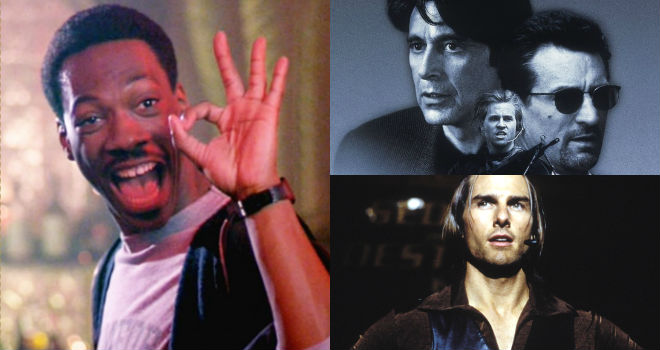
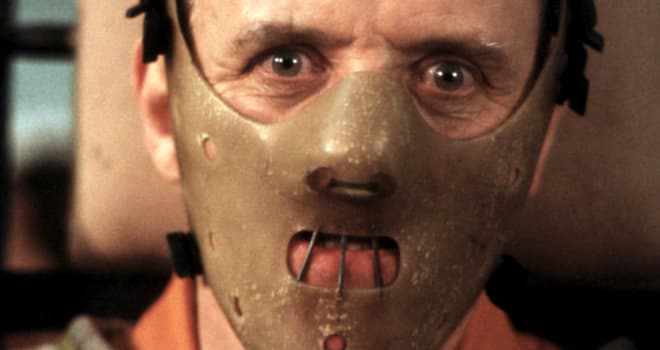 It's hard to think of a movie less suitable for Valentine's Day than "
It's hard to think of a movie less suitable for Valentine's Day than "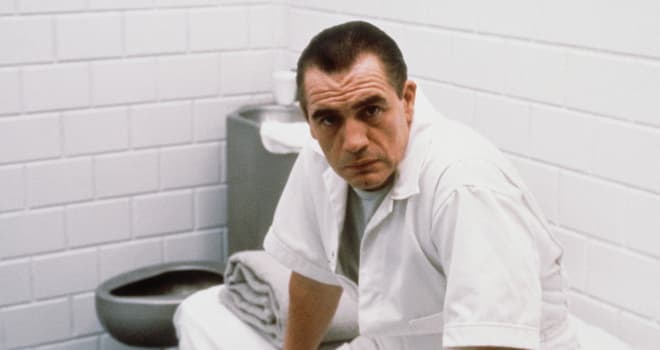 1. Hopkins wasn't the first actor to play Hannibal Lecter; that honor went to
1. Hopkins wasn't the first actor to play Hannibal Lecter; that honor went to 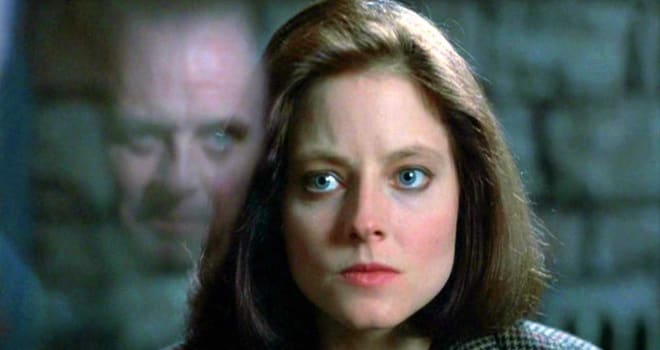 4. After Hackman dropped out, Orion Pictures hired
4. After Hackman dropped out, Orion Pictures hired 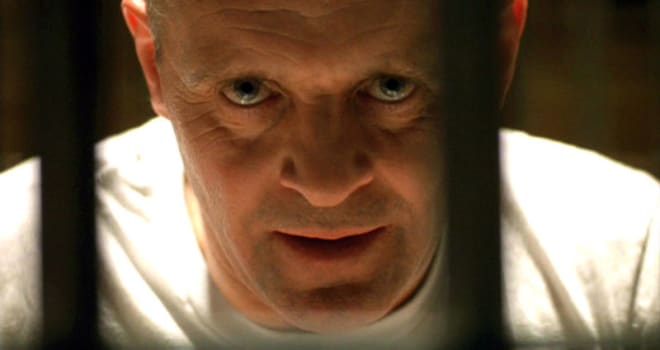 7. Hopkins also took credit for having Lecter dress in white. He thought it would look more clinical, and therefore more frightening. Part of his inspiration came from his own fear of dentists.
7. Hopkins also took credit for having Lecter dress in white. He thought it would look more clinical, and therefore more frightening. Part of his inspiration came from his own fear of dentists.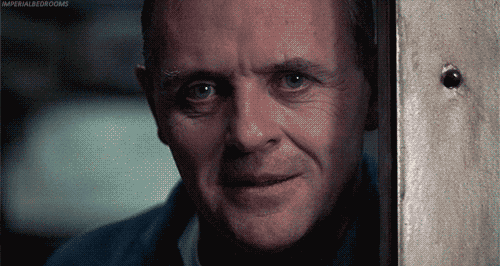 10. Paradoxically, despite all he brought to the character, Hopkins said he didn't feel the role was a challenge because it was all there on the page in Ted Tally's screenplay.
10. Paradoxically, despite all he brought to the character, Hopkins said he didn't feel the role was a challenge because it was all there on the page in Ted Tally's screenplay.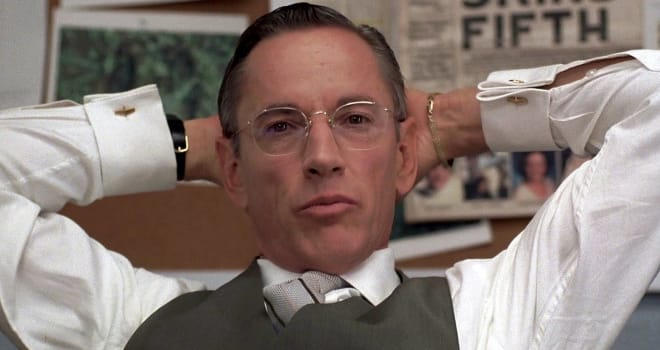 13. Harris based Jack Crawford on real-life FBI serial-killer profiler Jack Douglas. To develop his performance as Crawford,
13. Harris based Jack Crawford on real-life FBI serial-killer profiler Jack Douglas. To develop his performance as Crawford,  16. The skull that appears on the moth on the "Silence" promotional poster is not the actual figure from a death's-head hawk moth. It's a tiny reproduction of the 1951 photograph titled "In Voluptas Mors," created by Salvador Dalí and Philippe Halsman. It's a picture of seven naked women lying in a pattern to form the shape of a skull.
16. The skull that appears on the moth on the "Silence" promotional poster is not the actual figure from a death's-head hawk moth. It's a tiny reproduction of the 1951 photograph titled "In Voluptas Mors," created by Salvador Dalí and Philippe Halsman. It's a picture of seven naked women lying in a pattern to form the shape of a skull.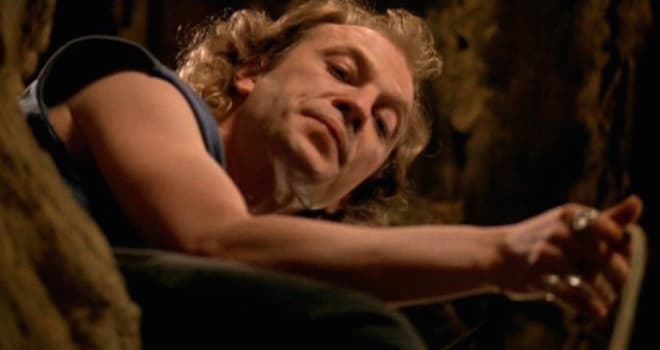 19. Clarice's monologue about the lambs was supposed to be accompanied by a flashback sequence of her childhood on the ranch, which the filmmakers were prepared to shoot in Montana, thousands of miles away from the Pittsburgh sets where most of "Silence" was shot.
19. Clarice's monologue about the lambs was supposed to be accompanied by a flashback sequence of her childhood on the ranch, which the filmmakers were prepared to shoot in Montana, thousands of miles away from the Pittsburgh sets where most of "Silence" was shot.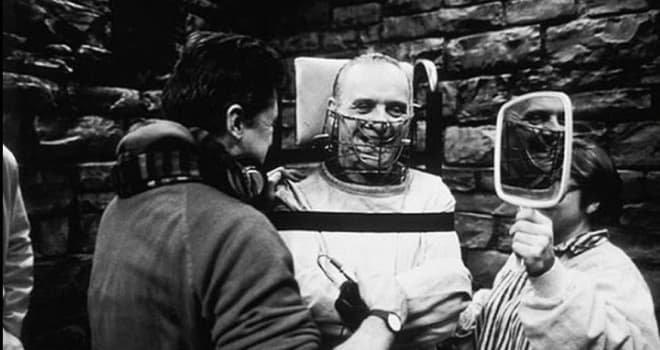 22. The film cost a reported $19 million to make. It earned back $131 million in North America and another $142 million abroad.
22. The film cost a reported $19 million to make. It earned back $131 million in North America and another $142 million abroad.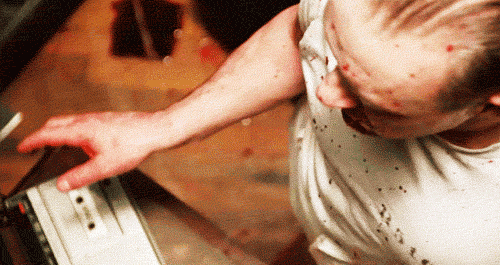 25. Despite the back-to-back successes at the box office, and at the Oscars for "Dances With Wolves" and "Silence," Orion went bankrupt by the end of 1991. Nonetheless, the studio drummed up $200,000 in early 1992 for what turned out to be the film's wildly successful awards campaign.
25. Despite the back-to-back successes at the box office, and at the Oscars for "Dances With Wolves" and "Silence," Orion went bankrupt by the end of 1991. Nonetheless, the studio drummed up $200,000 in early 1992 for what turned out to be the film's wildly successful awards campaign.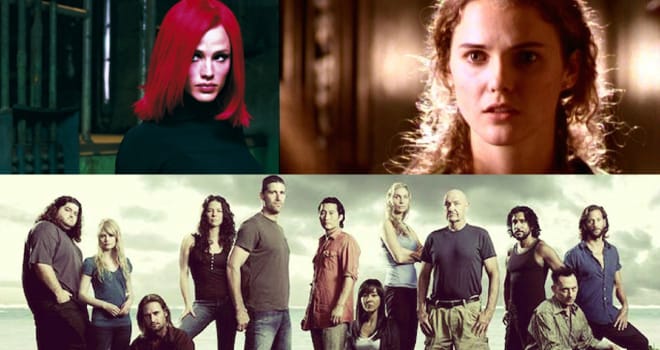
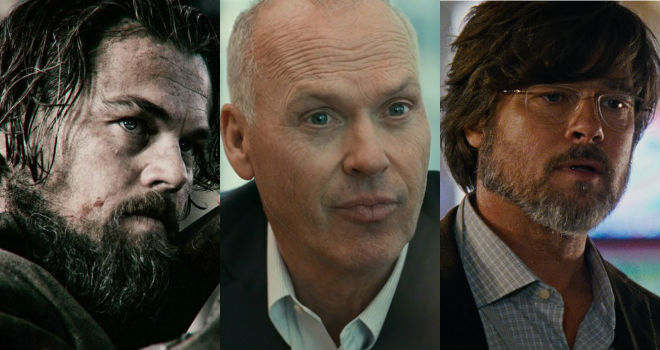 How unpredictable is
How unpredictable is 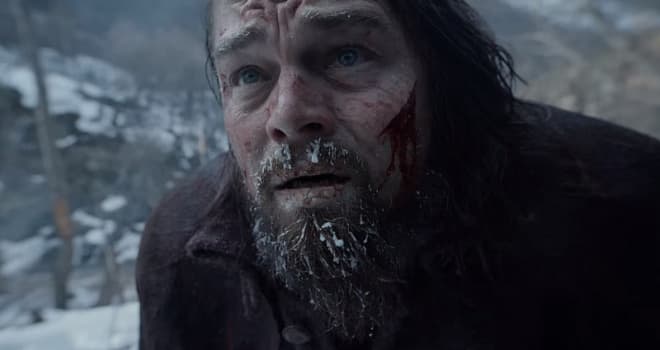 But does that mean "Revenant" is going to win Best Picture? Not necessarily, though the signs are encouraging. It has 12 nominations, more than any other contender. Besides the DGA, it won the Golden Globe for Best Drama. Star
But does that mean "Revenant" is going to win Best Picture? Not necessarily, though the signs are encouraging. It has 12 nominations, more than any other contender. Besides the DGA, it won the Golden Globe for Best Drama. Star 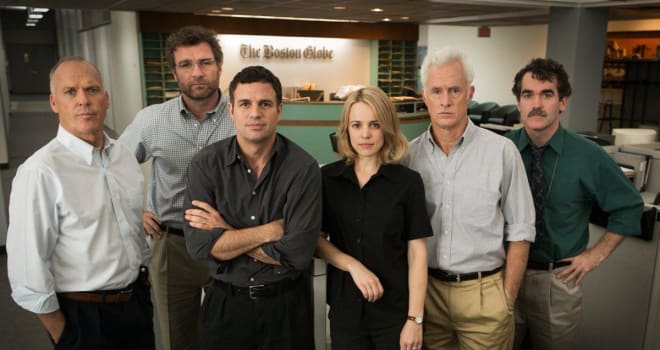 "Big Short" was the only other Best Picture contender even nominated for SAG's Best Ensemble award. It won the American Cinema Editor's ACE Eddie award for Best Editing (tied with "
"Big Short" was the only other Best Picture contender even nominated for SAG's Best Ensemble award. It won the American Cinema Editor's ACE Eddie award for Best Editing (tied with "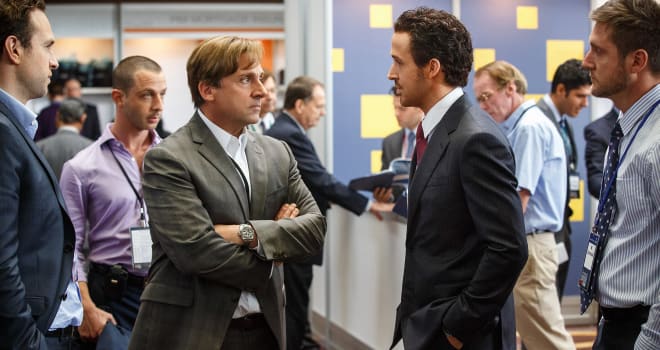 That said, "Big Short" and "Spotlight" are more consensus-appeal movies than "Revenant." At Rotten Tomatoes, "Revenant" has a lot more negative reviews (50) than the other two films (29 for "Big Short," nine for "Spotlight"). And despite "Revenant's" multiple Academy Award nominations, its failure to win any of the guild awards except the DGA suggests that its support among the Hollywood craftspeople who make up the bulk of the Academy is broad but not very deep.
That said, "Big Short" and "Spotlight" are more consensus-appeal movies than "Revenant." At Rotten Tomatoes, "Revenant" has a lot more negative reviews (50) than the other two films (29 for "Big Short," nine for "Spotlight"). And despite "Revenant's" multiple Academy Award nominations, its failure to win any of the guild awards except the DGA suggests that its support among the Hollywood craftspeople who make up the bulk of the Academy is broad but not very deep.